If you were looking forward to seeing your amaryllis bulb in bloom and it’s not happening, don’t despair. In this article, we’ll explain why amaryllis bulbs sometimes don’t grow and what you can do about it.
The Bulb Can Still Be in Dormancy
Dormancy is a natural process that allows the plant to rest and rejuvenate. If your amaryllis bulb is not growing, it may be in a state of dormancy. During this time, the plant will not grow or bloom.
First, make sure it is getting enough light. If your bulb is not getting enough light, it may need to be moved to a brighter location. Amaryllis bulbs need at least six hours of sunlight per day. There are a few things you can do to encourage your amaryllis bulb to come out of dormancy.

If the soil is too dry, the bulb will not be able to absorb the water it needs. Second, make sure the bulb is getting enough water. The soil should be moist, but not soggy.
Finally, you can try gently coaxing the bulb out of dormancy by giving it a little bit of fertilizer. Use a fertilizer that is high in phosphorus, such as bone meal or rock phosphate.
If you follow these tips, your amaryllis bulb should soon come out of dormancy and begin to grow and bloom.
Temperature Is Too Low
If the temperature is too low, the amaryllis will not grow. The ideal temperature for amaryllis is between 60 and 70 degrees Fahrenheit. If the temperature is above 70 degrees, the amaryllis will not bloom. If the temperature is below 60 degrees, the amaryllis will not grow.
Soil Is Dry
If your soil is dry, your Amaryllis will not be able to grow. The soil needs to be moist in order for the Amaryllis to be able to absorb the water and nutrients it needs. You can water your Amaryllis daily, or you can water it once a week and let the water soak in for a few hours. If you live in an area with high humidity, you may need to water your Amaryllis more often.
Not Enough Light
Amaryllis need at least six hours of sunlight each day, so if you’re keeping yours indoors, make sure it’s in a bright spot. If your amaryllis isn’t growing, it might not be getting enough light. If it’s not getting enough light, you might see the leaves start to turn yellow or the plant stop blooming.

If you think your amaryllis isn’t getting enough light, try moving it to a brighter spot. If that doesn’t help, you might need to give it artificial light. With a little extra light, your amaryllis should start growing again in no time. You can do this by putting it under a grow light or by putting it in a sunroom.
Amaryllis Bulb Rotting
If your amaryllis bulb is rotting, it’s likely due to one of two reasons: either the bulb was not properly cured before planting, or it’s being overwatered.
If the bulb was not properly cured, it will rot when exposed to moisture. To cure the bulb, place it in a cool, dry place for 6-8 weeks. Once the bulb is cured, it can be planted.
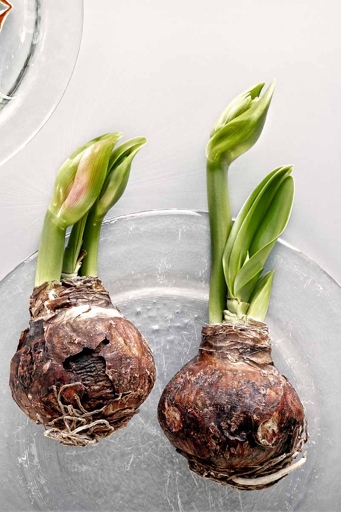
Water the bulb only when the soil is dry to the touch. Allow the water to drain freely from the pot, and never let the bulb sit in water. If you’re overwatering the bulb, it will rot from the inside out.
Amaryllis is Dead
If your amaryllis plant is not growing, there are a few possible reasons why. It is a popular plant to grow indoors, and is often given as a gift during the holiday season. The amaryllis plant is a beautiful, flowering plant that is native to South America. However, amaryllis plants can be finicky, and sometimes they do not bloom or grow as expected.
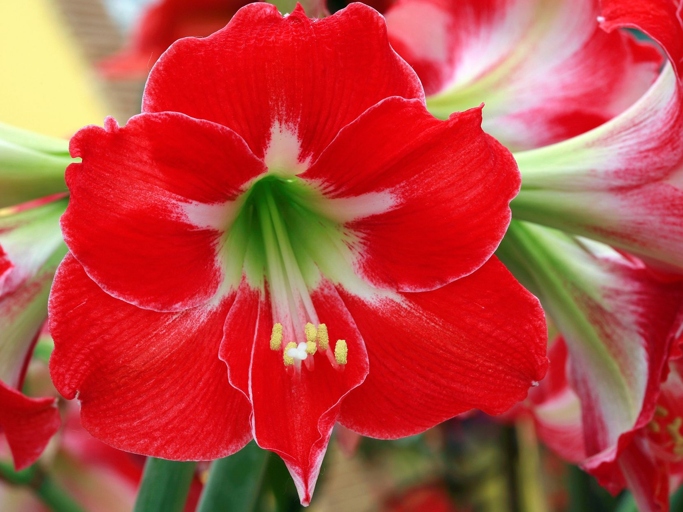
Amaryllis plants need at least six hours of sunlight per day in order to bloom. If your plant is not getting enough light, it will not bloom. One reason why amaryllis plants may not grow is because they are not getting enough light. Another reason why amaryllis plants may not grow is because they are not getting enough water. Amaryllis plants need to be watered regularly, and if they are not, they will not bloom.
If your amaryllis plant is not growing, it is important to figure out the reason why. Once you know the reason, you can take steps to fix the problem and get your plant growing again.
How to Plant Amaryllis Bulbs in Pots
Here’s how to plant amaryllis bulbs in pots so they’ll thrive: If you’re wondering why your amaryllis bulb isn’t growing, it’s likely because you’re not planting it correctly.
1. Choose a pot that’s slightly larger than the bulb, with drainage holes in the bottom.
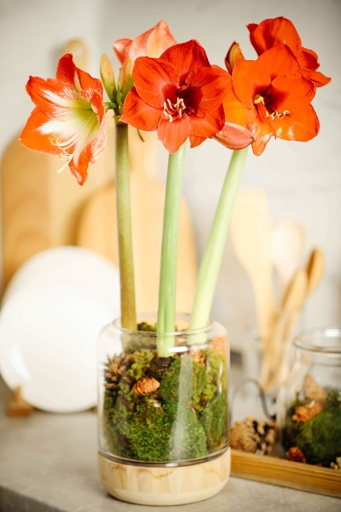
Fill the pot with a well-draining potting mix. 2.
3. Place the bulb in the pot, making sure the roots are pointing downwards.
4. Fill in around the bulb with potting mix, and water well.
Place the pot in a sunny spot, and keep the soil moist. 5.
With a little care, your amaryllis bulb will soon start to grow and bloom. Enjoy your beautiful blooms!
The Right Season
During this time, water it sparingly and don’t fertilize it. Amaryllis need a dormant season in order to bloom, so if you’re keeping your plant in constant light and warmth, it may never bloom. To give your amaryllis the best chance of blooming, give it a cool, dark period of about six to eight weeks in the fall or winter. If you’re wondering why your amaryllis isn’t growing, it could be because you’re not giving it the right season. Once the dormant period is over, you can start giving it more light and water, and it should start to grow and bloom.
The Right Temperature
Amaryllis need a warm, humid environment to thrive. The ideal temperature for amaryllis is between 70 and 80 degrees Fahrenheit. If your amaryllis isn’t growing, it might be because the temperature isn’t right. If the temperature is too hot, the plants will wilt and the flowers will drop off. If the temperature is too cold, the plants will go into dormancy.
You can also try growing amaryllis in a greenhouse. If you live in a cold climate, you can try growing amaryllis indoors. Place the plants in a sunny spot, and use a humidifier to keep the air around them moist.
If you live in a hot climate, you’ll need to take extra care of your amaryllis. You can also try growing amaryllis in a shady spot. Make sure the plants have plenty of water, and protect them from the hottest rays of the sun.
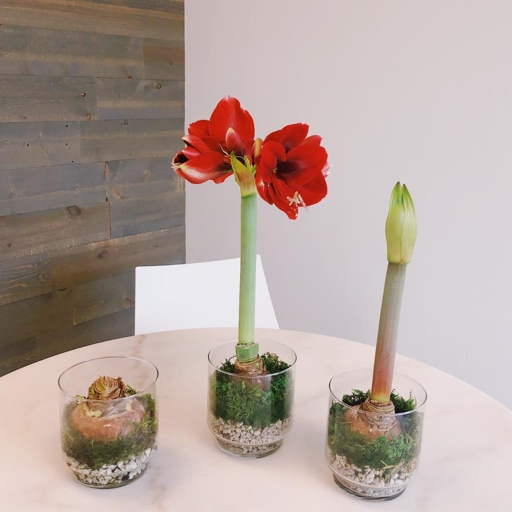
With a little care, you can make sure your amaryllis plants are happy and healthy.
The Right Planting Mix
Amaryllis need a well-drained soil that is high in organic matter. A good planting mix will have a mix of sand, loam, and peat. When it comes to planting amaryllis, the right mix is key. Amaryllis also need a good amount of sunlight, so make sure to plant them in an area that gets plenty of sun.
Soak Amaryllis Bulb Before Planting
If you’re having trouble getting your amaryllis to grow, you may not be soaking the bulb long enough before planting. Amaryllis bulbs should be soaked in lukewarm water for at least 24 hours before planting.
This gives the bulb time to absorb water and start growing. If you don’t soak the bulb long enough, it won’t be able to absorb enough water to grow.
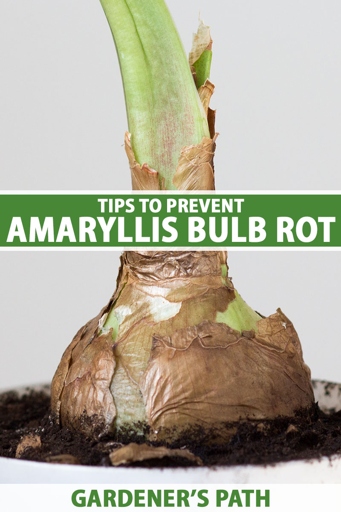
Soaking the bulb also helps to get rid of any chemicals that may be on the bulb. These chemicals can inhibit growth.
If you’re still having trouble getting your amaryllis to grow, try soaking the bulb for 48 hours before planting.
What month Do You Plant Amaryllis Bulbs?
If you want to have blooming amaryllis by Christmas, you need to plant the bulbs in October. Amaryllis bulbs need about 12 weeks of cool temperatures before they will bloom, so planting them in October will ensure they bloom in time for the holidays.
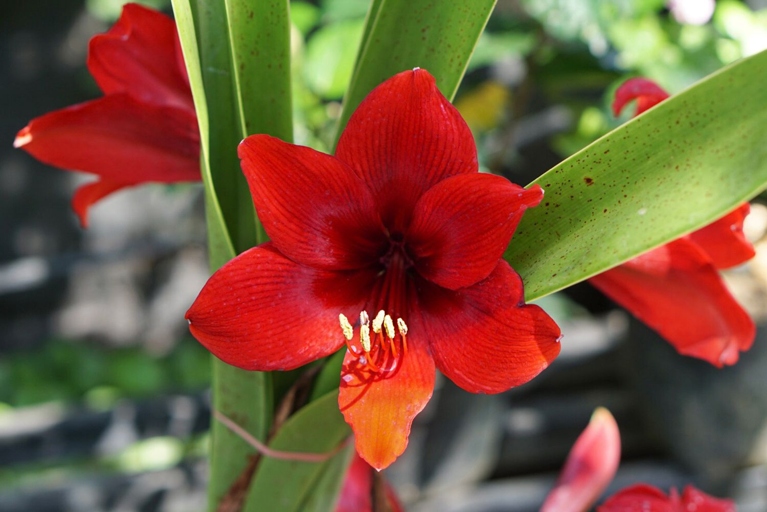
Amaryllis bulbs are native to South America, so they need warm temperatures and plenty of sunlight to thrive. Place the bulbs in a sunny spot, and water them regularly. If you live in a colder climate, you can try growing amaryllis indoors. With a little care, you can enjoy beautiful amaryllis blooms all winter long.
How Long Can Amaryllis Bulbs Be Stored?
Check on the bulbs every few weeks to make sure they are not drying out. The key to storing amaryllis bulbs is to keep them dry and cool. When you are ready to plant the bulbs, simply pot them up in fresh potting soil and water them well. Amaryllis bulbs can be stored for up to eight months. Place the bulbs in a paper bag or a container with a lid and store them in a cool, dark place.
How Deep Do You Plant Amaryllis Bulbs Outside?
This will help to prevent the bulb from drying out and will also help to keep the roots cooler in the summer months. The ideal depth for planting Amaryllis bulbs outside is 6-8 inches. When planting Amaryllis bulbs outside, it is important to plant them deep enough so that the neck of the bulb is buried.
Frequently Asked Questions
1. Why is my amaryllis not growing?
There are several reasons why an amaryllis might not be growing. The plant may not be getting enough light, water, or nutrients. The soil might be too dense or too sandy. Or, the plant may be too young or too old.
2. What are the best conditions for amaryllis growth?
Amaryllis prefer bright, indirect light and well-drained, fertile soil. They also need consistent watering, especially when they are actively growing.
3. How often should I water my amaryllis?
Water your amaryllis when the soil is dry to the touch. During the active growth period, you may need to water weekly or even daily.
4. What are the signs of overwatering?
If you overwater your amaryllis, the leaves will yellow and the plant will stop growing. The bulb may also rot.
5. What are the signs of under watering?
If you under water your amaryllis, the leaves will wilt and the plant will stop growing. The bulb may also shrivel.
6. Can I fertilize my amaryllis?
Yes, you can fertilize your amaryllis. Use a balanced fertilizer and apply it monthly during the active growth period.
7. What are the best conditions for storing amaryllis bulbs?
Amaryllis bulbs should be stored in a cool, dry place. They can be stored in the refrigerator for up to six months.
8. Can I replant my amaryllis bulb?
Yes, you can replant your amaryllis bulb. Be sure to choose a pot that is only slightly larger than the bulb.
9. What are the best conditions for flowering?
Amaryllis prefer cool temperatures and long days for flowering. If you live in a warm climate, you can mimic these conditions by placing the plant in a cool, dark room for two months before flowering.
10. Why are my amaryllis leaves turning yellow?
Yellowing leaves can be a sign of stress, such as too much or too little water, or poor drainage. It can also be a sign of a nutrient deficiency. If the leaves are only lightly yellowed, you can try adjusting the care you are giving the plant. If the leaves are very yellow or brown, it is best to remove them.
Final thoughts
If your amaryllis isn’t growing, it’s likely because it’s not getting enough light. Move it to a sunny spot, and it should start to grow. Also make sure to water it regularly. With a little care, your amaryllis should start to grow and bloom.
